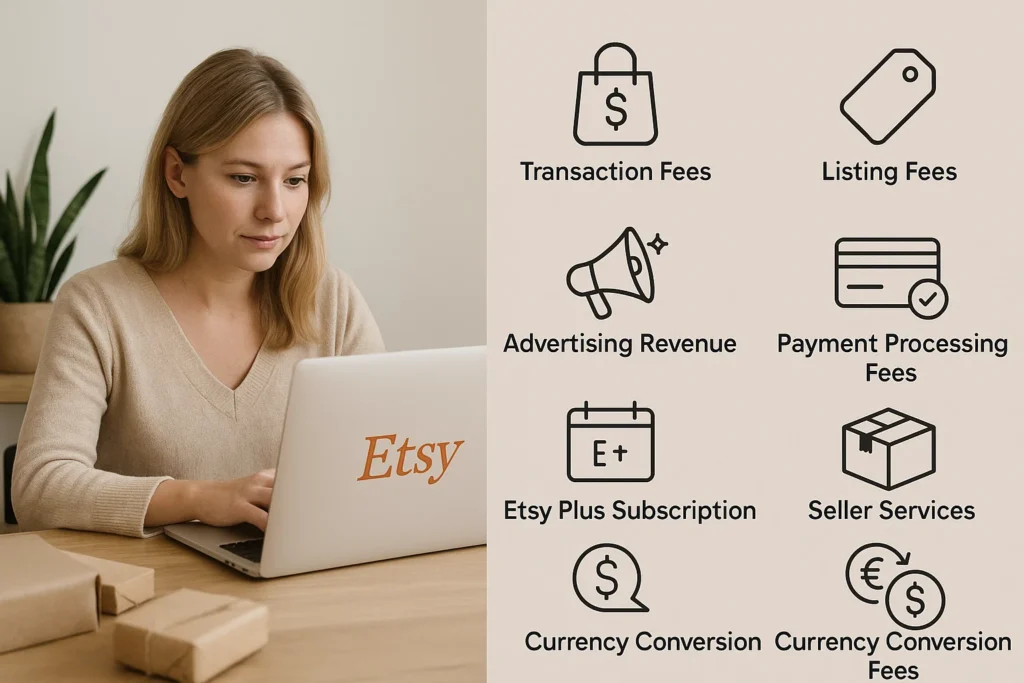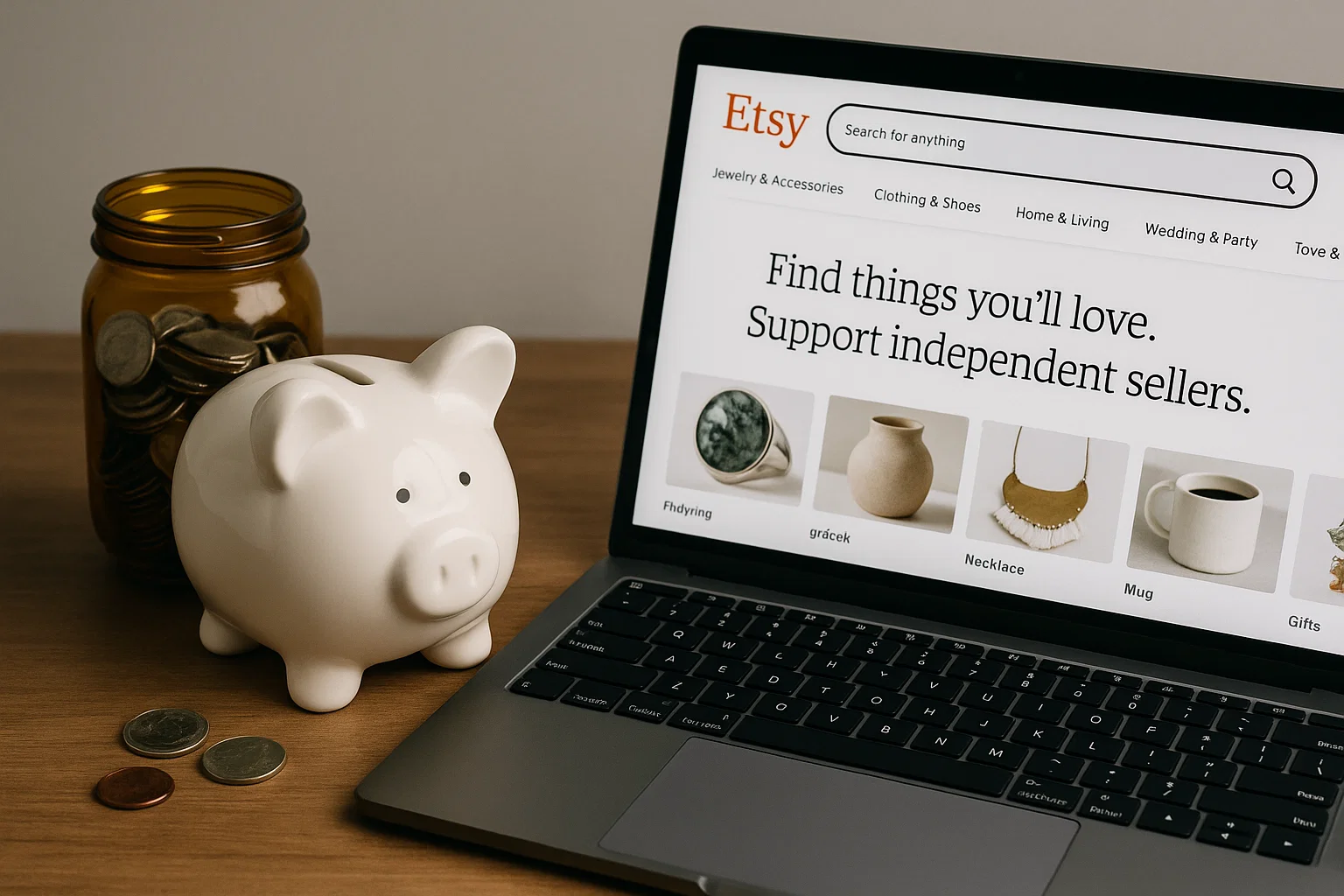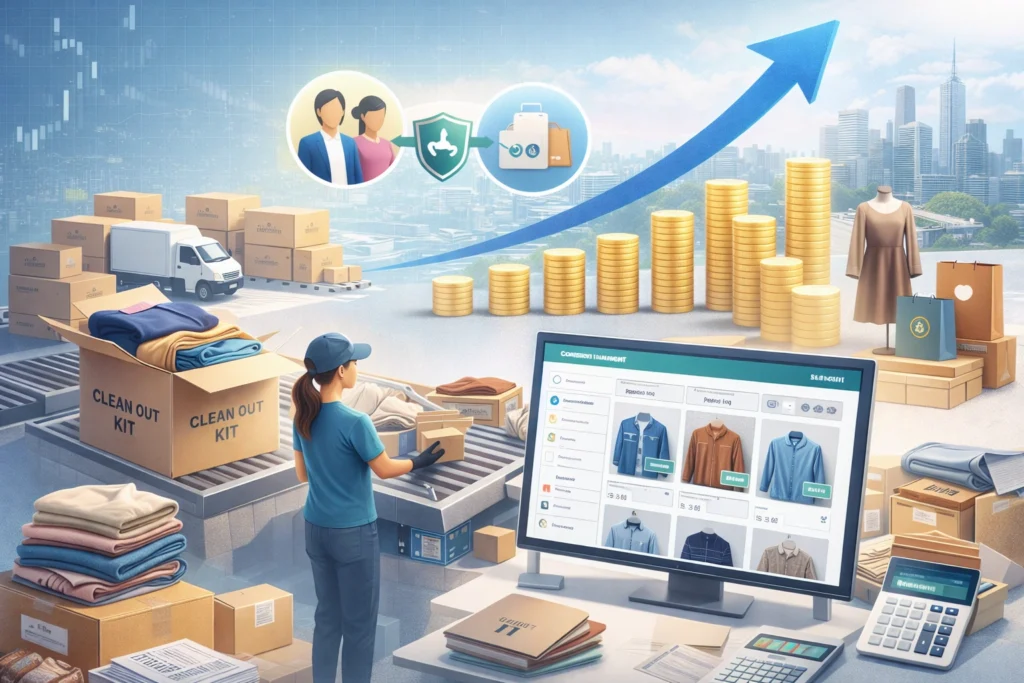Etsy has carved out a unique niche in the world of eCommerce. Unlike mass-market giants like Amazon, Etsy thrives on individuality — offering handmade goods, vintage items, and creative supplies from independent sellers worldwide. It’s where artisans meet global buyers, all wrapped in a community-driven experience.
Founded in 2005, Etsy has grown into a multibillion-dollar platform with over 90 million active buyers and 7.5 million sellers (as of 2025). Its marketplace model is deceptively simple but financially powerful — combining transaction-based earnings, seller services, and scalable digital tools to keep revenue flowing.
In this blog, we’ll break down how Etsy makes money, explore its monetization strategies in detail, and explain how startups can replicate this revenue model with a ready-made Etsy clone from Miracuves.
How Etsy Makes Money
Etsy operates a multi-pronged revenue model designed around enabling small business owners to sell creatively crafted products — and monetizing that journey at every step. Here’s how Etsy generates its income:
- Transaction Fees – Charges a percentage on every completed sale, including shipping.
- Listing Fees – Sellers pay a flat fee to list each item in their store.
- Payment Processing Fees – Earns a cut through Etsy Payments when handling buyer transactions.
- Advertising Revenue – Offers promoted listings and offsite ads to boost product visibility.
- Etsy Plus Subscription – Monthly premium plan for sellers with added tools and credits.
- Seller Services – Includes shipping labels, packaging tools, and more.
- Currency Conversion Fees – Adds a margin when converting buyer payments across currencies.

Each revenue stream is small on its own, but when multiplied across millions of sellers and transactions, it forms a powerful and scalable business model.
Detailed Breakdown of Revenue Channels
Transaction Fees
Etsy charges a 6.5% transaction fee on the item price, including shipping and gift wrapping. This fee is deducted automatically when a seller makes a sale. Given the platform processes millions of transactions daily, this is a primary and predictable source of revenue.
- Who Pays? Sellers
- Why It Scales? Revenue grows directly with marketplace volume, without inventory costs.
Listing Fees
Sellers pay $0.20 USD to list an item for four months or until it sells. While this fee seems minimal, Etsy’s massive seller base makes it a reliable recurring income stream.
- Who Pays? Sellers
- Why It Scales? Every product listed contributes, regardless of sale outcome.
Payment Processing Fees
Etsy Payments processes the majority of transactions on the platform. It charges approximately 3% + $0.25 (varies by country) per transaction. This fee covers card processing, fraud protection, and ensures seamless buyer-seller transfers.
- Who Pays? Sellers
- Why It Scales? Applies automatically to every payment processed through Etsy.
Advertising Revenue
Etsy offers two ad options:
- Onsite Ads (Promoted Listings) where sellers pay-per-click to boost product visibility.
- Offsite Ads where Etsy promotes listings on Google, Pinterest, and social media — and charges sellers 12–15% commission on resulting sales.
- Who Pays? Sellers
- Why It Scales? Variable pricing and performance-based ROI encourage frequent usage.
Etsy Plus Subscription
This premium offering costs $10/month and provides advanced store customization, free credits for ads and listings, and access to exclusive tools. It targets growing sellers who want to scale their shops with better branding and automation.
- Who Pays? Sellers
- Why It Scales? Recurring monthly revenue with high adoption among serious sellers.
Seller Services
Etsy offers services like discounted shipping labels, packaging tools, and seller protection. These generate convenience-based revenue while improving seller retention.
- Who Pays? Sellers
- Why It Scales? Optional, but often bundled into the workflow of active sellers.
Currency Conversion Fees
Etsy earns an additional 2.5% fee on currency conversion when a buyer pays in a different currency than the seller’s. While invisible to most, this adds a profitable layer to global transactions.
- Who Pays? Sellers (indirectly)
- Why It Scales? Expands with Etsy’s international buyer growth.
Discover the Etsy marketing strategy that powers creator-driven growth. Learn the key growth hacks every startup can apply to scale faster.
Why This Revenue Model Works in 2025
Etsy’s revenue model isn’t just working — it’s thriving. In 2025, a combination of cultural trends, digital behavior, and platform flexibility make Etsy’s monetization strategy more relevant than ever.
The Rise of the Creator Economy
People want unique, handmade, and story-driven products — not just mass-produced goods. Etsy directly benefits from this shift, as consumers value creativity over convenience, and are willing to support independent makers.
Low Risk, High Volume Monetization
Instead of taking inventory risks or manufacturing products, Etsy makes money by facilitating others’ commerce. This fee-based model scales effortlessly with transaction volume and encourages repeat business from loyal sellers.
Platform Stickiness Through Tools
From seller analytics to shipping labels and premium subscriptions, Etsy keeps sellers inside its ecosystem. Each additional service not only generates income but also makes sellers less likely to churn.
Global Expansion and Currency Revenue
With increasing international adoption, Etsy’s earnings from payment processing and currency conversion continue to rise — often unnoticed by end users, but lucrative at scale.
Ad Spend and Self-Serve Marketing
In an age where digital visibility matters, sellers are eager to pay for traffic. Etsy’s ad tools allow small businesses to compete for visibility — and Etsy earns every time a seller promotes their listing.
Etsy’s model works in 2025 because it’s diversified, seller-centric, and aligned with the modern digital economy — all while requiring minimal operational overhead compared to inventory-based eCommerce platforms.
Check the must-have features in an Etsy-like app to build a successful marketplace. Also, learn how the Etsy app works to understand the model behind its growth.
Can Startups Replicate Etsy’s Revenue Model?
Yes — but only with the right foundation.
Replicating Etsy’s success requires more than just a marketplace website. You need a robust platform with built-in monetization features, seamless seller onboarding, secure payment processing, and the ability to handle millions of product listings without compromising performance.
That’s where Miracuves can help.
With our fully customizable Etsy Clone solution, startups and digital agencies can launch their own creator marketplace — equipped with the same revenue-driving mechanics as Etsy. It includes:
- Multi-vendor capabilities with seller dashboards
- Built-in commission management and listing fee modules
- Support for digital and physical goods
- Integrated payment gateway with processing and currency fee logic
- Optional subscription features for power sellers
- Advertising and promotion tools
- Scalable backend to handle large inventories and traffic
Most importantly, Miracuves gives you the time-to-market advantage — so you can focus on onboarding sellers and generating revenue instead of building from scratch.
Whether you’re targeting artisans, creators, vintage sellers, or niche craft communities — you can replicate Etsy’s revenue model faster and smarter with Miracuves.
The Etsy Clone by Miracuves is priced at $2,899, crafted for creators and entrepreneurs to launch handmade goods marketplaces.
Showcase unique, artistic, and customizable products to a global audience.
Go live in just 3–6 days with complete source codes.
Compare the best Etsy clone scripts in 2025 with features and pricing to find the right fit. Learn how to build an app like Etsy with our full-stack guide and check the Etsy app development cost in 2025 before you invest.
Conclusion
Etsy’s revenue model is a textbook example of how platforms can profit by empowering others. Through a clever mix of transaction fees, listing charges, ad services, subscriptions, and seller tools, Etsy has built a scalable and resilient income engine that thrives in 2025’s creator-driven economy.
And here’s the good news — you can adopt the same monetization strategy.
With Miracuves’ Etsy Clone, startups can launch their own creative marketplace preloaded with all the monetization essentials: commissions, listing fees, subscriptions, ads, seller services, and more. You don’t have to start from zero — you just need the right tech partner.
FAQs
How does Etsy generate revenue?
Etsy earns revenue through transaction fees, listing charges, payment processing fees, ad services, seller subscriptions like Etsy Plus, and additional services like shipping labels and currency conversion.
Is Etsy profitable in 2025?
Yes, Etsy remains profitable in 2025 thanks to its diversified revenue model, strong seller ecosystem, and continued demand for unique, handmade, and vintage products across the globe.
What are the main income sources for Etsy?
The main income streams include seller transaction commissions, listing fees, offsite and promoted ads, Etsy Plus subscriptions, and fees from payments, shipping, and currency conversion.
Can startups use the same revenue model as Etsy?
Absolutely. Etsy’s fee-based marketplace model is replicable with the right tech stack. Startups can adopt similar monetization strategies with the help of clone platforms like the one offered by Miracuves.
Does Miracuves offer an Etsy clone with monetization features?
Yes. Miracuves provides a ready-made Etsy Clone solution that includes commission engines, listing and processing fee modules, seller subscriptions, promotional tools, and more — designed for fast deployment and scalable monetization.








